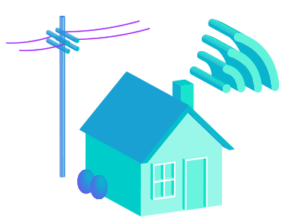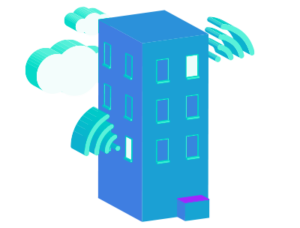Insights
Mar 18, 2021 _ insights
Thinking Beyond the Clinic: COVID, Telehealth, and the Future Shape of Healthcare Spaces
The effects of the COVID-19 pandemic have rippled across every aspect of our daily lives, changing how and where we work, what we do with our free time, what we wear, and even how we greet our loved ones.
Nowhere has its impact been more profound than in the healthcare industry. From the use of personal vehicles as waiting rooms to restrictions on nonurgent surgeries, the pandemic has already changed the way healthcare spaces are used. An important element of these changes, which will have lasting impacts, involves the widespread adoption of telehealth.
Driven by infection control precautions, the past year witnessed an astronomical rise in the number of telehealth appointments. The Cleveland Clinic, for instance, saw a 1,700% increase in March 2020 from the previous month. How will the growth of telehealth and other forms of virtual care reshape healthcare spaces in the future?
In “Telehealth and the Changing Shape of Health Spaces”—out now in the AIA Academy of Architecture for Health’s Academy Journal—I explore this question. Here are a couple of key takeaways:

Telehealth’s time has come. Whether you call it telehealth, virtual care, or remote care, telehealth has existed as a marginal practice for decades, but with the removal of bureaucratic barriers, its exponential growth, and increased comfort with telehealth, it’s likely to become a greater part of our healthcare experience.
Telehealth could fundame ntally reshape the physical footprint of healthcare systems. From live consultations done from the privacy of your own home to interactions initiated from a beauty parlor, the technology undergirding telehealth systems could help integrate very different spaces—the home, the nail salon, the gym, etc.—into a larger health ecosystem, changing the space needs of healthcare providers.
ntally reshape the physical footprint of healthcare systems. From live consultations done from the privacy of your own home to interactions initiated from a beauty parlor, the technology undergirding telehealth systems could help integrate very different spaces—the home, the nail salon, the gym, etc.—into a larger health ecosystem, changing the space needs of healthcare providers.

Robust telehealth systems can respond to the unique needs of their communities. Given the flexibility of the technologies that enable telehealth, different telehealth systems are highly adaptable, allowing them to meet very different needs in different contexts (for instance, in rural vs. urban communities).
For a fuller picture of telehealth’s possible futures, read the article here.
________________________________________________________________________________
 Sean Cottengim wears many hats: A designer in GBBN’s healthcare as well as culture and education markets, an instructor at University of Cincinnati, and a core member of our Design Issues Series. He is forever exploring emerging trends and technologies and thinking through what those changes mean for architecture. His recent projects include Cincinnati & Hamilton County Public Library’s Deer Park Branch and UC Health Medical Center’s Main Entrance Improvements.
Sean Cottengim wears many hats: A designer in GBBN’s healthcare as well as culture and education markets, an instructor at University of Cincinnati, and a core member of our Design Issues Series. He is forever exploring emerging trends and technologies and thinking through what those changes mean for architecture. His recent projects include Cincinnati & Hamilton County Public Library’s Deer Park Branch and UC Health Medical Center’s Main Entrance Improvements.




